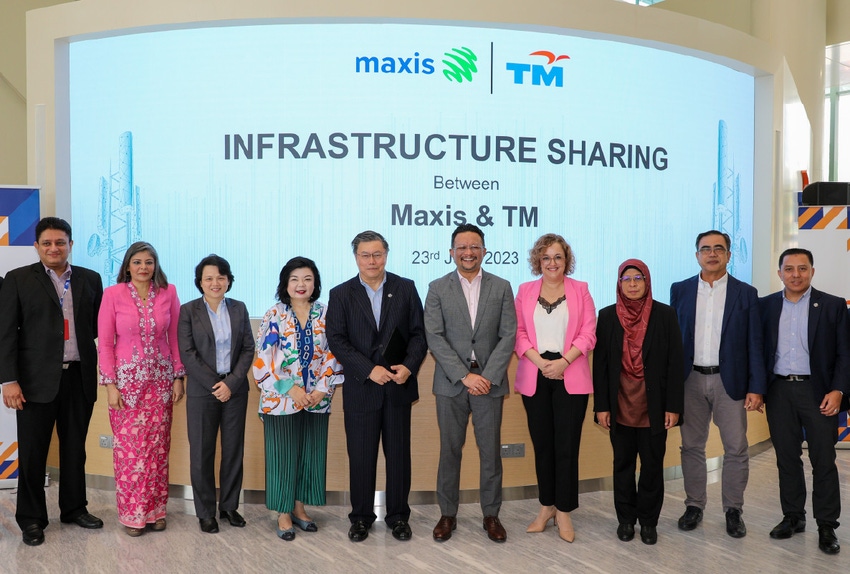Telekom Malaysia and Maxis ink RAN sharing deal
Telekom Malaysia has brokered a deal to share rival Maxis' RAN infrastructure and thereby boost its 4G coverage as it looks to improve its position in the country's mobile market.
June 26, 2023

Telekom Malaysia has brokered a deal to share rival Maxis’ RAN infrastructure and thereby boost its 4G coverage as it looks to improve its position in the country’s mobile market.
The two operators talked up the benefit of the deal as being “to strengthen the nation’s digital ecosystem through industry collaboration,” which is fair enough, but really it’s more about giving Telekom Malaysia, or TM, as it is more commonly known, a leg up in mobile.
Specifically, TM will access Maxis’ 4G Multi Operator Core Network (MOCN), which will allow the two telcos to run different cores, but share RAN infrastructure. The move will enable TM to extend its 4G mobile coverage to more than 95% of the population, it said.
The deal also comes with a 2G and 4G roaming element, which again will help TM to boost its coverage throughout Malaysia. Under the terms of the arrangement, Maxis will provide around 6,800 sites for 4G MOCN and domestic roaming services, and 10,000 sites for 2G roaming, in both rural and urban areas.
TM is essentially trying to get back into mobile via its Unifi Mobile operation, having exited the market by spinning off its cellular operation some 15 years ago. Its former Celcom operation subsequently became part of Axiata Group, and is now CelcomDigi, having merged with Telenor’s Digi in November last year, a manoeuvre that created a new dominant player in the market.
As such, Maxis and rival U Mobile now have their work cut out to compete with CelcomDigi, while for TM there is arguably an opportunity to build up Unifi Mobile as the country’s fourth MNO, rather than dragging its heels as the fifth ranked of five players.
Its aforementioned 95% 4G coverage target, now attainable through the Maxis deal, compares pretty favourably with the 96% enjoyed by CelcomDigi customers, although the new market leader is shooting for 98%-plus in the next three years, it disclosed alongside the publication of its first quarter results earlier this year. As a result of the merger, it is decommissioning redundant sites and building new ones.
As for the next generation of mobile technology, TM has gone on record as saying that it will play an active role in the creation of Malaysia’s second wholesale 5G network, which will involve the use of its fibre infrastructure, digital platforms – including edge nodes and data centres – and rollout expertise.
“TM shall continue to deliver converged connectivity and solutions across fibre and 5G to its home, SME, enterprise and Government customers through Unifi and TM One,” it said last month, after the government announced plans to build a second 5G network. The telco is offering 5G services though Unifi Mobile, and it could be that the wholesale approach is providing it with an easier way back into the mobile market than it otherwise would have had.
“We are witnessing an important step in the industry’s collaborative efforts towards infrastructure sharing,” said Datuk Imri Mokhtar, Group CEO at TM, when the Maxis deal was announced.
“Our partnership will elevate TM’s 4G mobile proposition to deliver exceptional customer experience for home, SME, and enterprise customers. It will complement our 5G offering, and pave the way for greater innovation and collaboration, to deliver solutions and services for all Malaysians,” the chief executive said.
“We look forward to progressing ahead with TM on this initiative,” added Maxis CEO Goh Seow Eng. “Industry collaboration is the right way forward as it will ultimately benefit consumers with wider coverage through better cost efficiency and more efficient use of our resources,” he said.
That, and there’s presumably a business angle in it for Maxis too.
Get the latest news straight to your inbox. Register for the Telecoms.com newsletter here.
About the Author(s)
You May Also Like











_1.jpg?width=300&auto=webp&quality=80&disable=upscale)


.png?width=800&auto=webp&quality=80&disable=upscale)